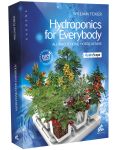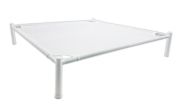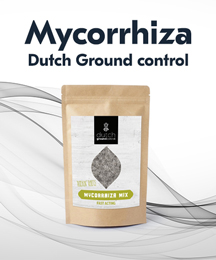Date: 03 Jul 2023
LED systems produce a higher PAR than MH, HPS and other types of lamps. However, your plants will need about the same amount of watts per square meter to achieve a crop similar to that of traditional HID lights. Also note that LED lighting systems are often advertised as more powerful than their actual electrical power consumption, but this does not mean that a 400 watt LED can cover the same square footage as a 1000 watt HPS bulb.
To get an idea of the light intensity you are providing your plants, you can purchase a lux meter and measure the light intensity at different points on the canopy. You can also make a theoretical calculation by considering the lumens emitted by the lamp relative to the growing surface. To calculate the lux pressure on the crown of the plants, simply divide the lumens of the lamp by the square meters of the illuminated surface. If you place a lamp that emits 100,000lm at a distance of 1m from the top of the plant, it will illuminate an area of 1m² with an intensity of 100,000lx (100,000lm ÷ 1m = 100,000lx). If the lamp is only 0.5m away from it, it will get 100,000lm ÷ 0,5m = 200,000lx.
Unfortunately, the light intensity decreases by a factor equal to the distance of the source from the illuminated object, therefore the same lamp placed two meters away will increase the width of its beam, covering 4 m², but only by 25,000 lx. You would therefore need four lamps to achieve the hypothetical target of 100,000 lx over the entire grow area.
HID (MH, HPS): RULES FOR THE CORRECT DISTANCE
HID lamps are available in a metal halide (MH) version with a cold light suitable for the vegetative phase and a high pressure sodium (HPS) version with a much wider spectrum for the flowering stage. These lamps operate at high temperature and require a suitable cooling system. In addition, over time they emit less light, which is why new lamps should be kept further away from older ones, and after a few cycles you should think about replacing them.
The appropriate spacing for MH and HPS bulbs depends mainly on wattage.
Assuming the ventilation in your grow room is set up correctly, with a smaller 250W bulb you can start at a distance of 35 cm, gradually working your way down to the crown until you reach 25 cm from the buds at the end of the flowering stage. With a 600W bulb, you can start at 50 cm, going down to 30 cm; if you have chosen a 1000W lamp, you better provide at least 80 cm distance.
According to common practice, you should hold the back of your hand facing the light just above the top of the plants; if you feel comfortable, so will your plants. But don't put too much faith in general rules. Always check your plants for signs of overheating or excessive photon pressure.
At what height should you hang MH and HPS grow lights?
Popular, widely used, and probably best for higher yields, many growers are devoted to their MH or HPS grow lights.
While MH and HPS are suitable for different stages of the growing cycle, you can usually hang them at a similar distance from your plants. Both types of technology work best when closer to the crops, but it's good to try them out if it's your first time.
Whether you're a beginner grower or changing your grow style, we recommend starting at the top end of the lamp range. In this way, you can gradually reduce it until you are convinced that your plant is getting enough energy. We recommend that the light is always at a distance of at least 30-38 cm from the top of the crown of the plant. Remember that looks can be deceiving and you don't want to heat the leaves too much.
The last thing to consider is the light bulbs. Unlike those in your home, the functionality of a light bulb diminishes over time. Since bulbs emit less energy over time, an older bulb will need to be closer to your plant than a newer one. Likewise, the brand new bulb should be kept as far away as possible without sacrificing the plant's development. Most people change their MH bulbs at least once a year, while users of HPS bulbs may change them every few times.
LED: RULES FOR CORRECT DISTANCE
LED lamps emit a large amount of light pressure, even at relatively low temperatures. This amount of light alone, not the heat, can cause light burn and leaf bleaching.
Different models of LED grow lights have different optimal distances from plants, and manufacturers usually include recommendations with their products. Just start at a medium distance within the recommended range and monitor your plants over the next few days. Turn off the lights if you notice that some leaves are pale or have burnt tips. If your plants are happy, move the LED panel closer, but never to the point where the upper leaves begin to bleach, turn yellow, or turn brown.
High-power LED panels with an output of more than 300 W should be kept at least 70 cm from the crown, and then possibly moved closer during the flowering stage. As a general guideline, 200-400W LED lamps should be placed 30-70 cm from the plants, while 450-600W lamps require a distance of 50-80 cm. Higher power systems need to be spaced even further apart. Be sure to keep a close eye on your plants whenever you start using a new light.
The LED lights that gardeners use to grow plants require fine-tuning to find the ideal hanging height. However, with so much power, under the right conditions you can get incredible yields.
LED lights are complicated. There is so much variety on the market that there is no one-size-fits-all option. As a result, there is no standard distance for them. Basically, whatever device you choose, the manufacturers will provide recommended heights and you will still need to do some fine tuning.
Another way LED grow lights can mislead you is that they don't always look as powerful as they are. The lights look dim, so it's easy to think they're not putting out enough power. On the contrary, they are deceptively strong and you should watch out for them. Failure to do so may cause your plants to turn pale or produce an insufficient harvest.
Although every LED grow light is different, as a general rule hang them farther than you would other lights and adjust them. You can then continue to adjust throughout the plant's growth cycle, moving them closer to it when it blooms.

 New products
New products 

































































 Presents
Presents













Post comment